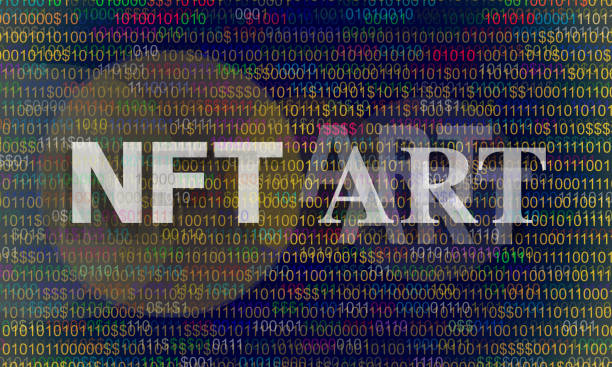There might be many reasons for the NFT triumph. There are technical explanations of the blockchain as the most advanced technology. There are legal explanations for the more effortless transfer of artworks and intellectual property rights. Many articles address those issues. We, however, offer you to dig for answers in modern culture. We offer you to dive into contemporary philosophical problems and search for NFTs there.
The XXI century is flooded with information. Today, people cannot cope with the deluge of data. Of course, this affects our aesthetical perception. In “Aesthetics beyond Aesthetics”, Wolfgang Welsh wrote that the excess of colour first throws the man into the arms of minimalism, and then a new form of expression is being born.
When we have an overflow of anything, our first reaction is to limit this factor; the second step would be to shift to a different, more friendly reality. NFT-art takes us to the meta-reality that has certain bridges to our existence, although it is a new world of expression. People feel more comfortable and more confident in this world. And now, let us see why it is so.
Our first explanation is within the realm of psychology. The increased stress and feverish rhythm of modern life explain the desire to leave this world and teleport into another world, if only for a short while. Suffocating in this stream, our consciousness is looking for an exit into something ” different.” It starts searching for an “oasis” to save itself.
The increased demand in the market for narcotics is unfortunately also attributable to these factors. Although NFT is much healthier, it does not create an addiction. We can say that NFT is a truly non-harmful drug for an irritated mind.
Of course, one could say that any analogue artist creates a unique world, and it would be true. Analogue art also has a therapeutic value. However, NFT-art is less informative. It doesn’t require a specific art background to be perceived, unlike the works of Leonardo da Vinci, Velázquez, or Rubens, for example.
The contemporary viewer accepts NFT art in a completely natural way. NFT does not require the recipient to be in a specific cultural context, as with Marcel Duchamp, Mark Rothko, or Willem de Kooning. The world of NFT is always a world of new emotions. It does not seek appreciation or comprehension. Instead, it tends towards the lack of it. NFT art is not bound to any cultural context or semantic tangle. It is pure.
However, NFT-art is not an outsider culture. NFT is a perfect embodiment of the contemporary philosophical mainstream. Therefore, the second explanation for the rise of NFT is our modern culture and its leading concepts.
On the one hand, NFT brilliantly embodies the concepts of postmodernist philosophy (Jacques Derrida or Roland Barthe). NFT art conveys ideas of binary, deconstruction, and autopoietic. All the ideas that have been presented and explained in the philosophical works of the XX century are now unveiled in the world of crypto because of blockchain technology and mindset. For instance, the death of author, Roland Barthe, is embodied in cryptocurrency. Who invented the most popular cryptocurrency – Bitcoin? Satoshi Nakamoto.
The answer is as good as John Dow or maybe John Galt. Decentration, Jacques Derrida, should we even start explaining? The whole philosophy of blockchain was built on the ideas of deconstruction and decentralisation – together decentration.
On the other hand, NFT perfectly correlates with the mainstream economic concept of ‘nobrow’ described by John Seabrook in his novel “NoBrow: The Culture of Marketing the Marketing of Culture.” As Seabrook explains, school and skill are not crucial for contemporary culture. The twenty-first century has absorbed and mixed highbrow and lowbrow, white-collar and blue-collar, elitist and mass culture. In nobrow, you cannot hide behind an expensive English suit or the title of an academic. All facets are washed away. What remains is an individual and their opinion. To like or dislike is the only expert
assessment in modern society. And the amount in USD or BTC is the only peer-review acceptable to the nobrow community. Perhaps this point of view seems unacceptable for art historians or classical aesthetics. Though it perfectly corresponds with the modern understanding of aesthetics as an introspection of sensuality.
Paintings by Monet and Picasso are also worth millions of dollars, but they are bought mainly for the name, like Rolls Royce cars and Rolex watches. Of course, the NFT also gives recognition to their buyers.
For example, Beeple’s “Everyday: The First 5000 Days” acquirer Vignesh Sundaresan, known to the cryptocurrency community as MetaKovan, made headlines worldwide in March 2021. The same can be said about the NFT Bored Ape Yacht club, which has started to be used in trademarks and commercial labels.
However, most of the billions of dollars worth of NFTs sold are the work of unknown, often outsider artists. People buy such pieces to satisfy their mental needs. We open a marketplace, swipe, see the work we like, and purchase if a cryptocurrency wallet allows it.
Can we conclude that the remedial effect of meta-art and its true-to-its-root concept are the key factors of its success? As we stated initially, those are just two of many factors. However, the honesty, purity, and anonymity of NFT-art are the attributes that foreshadow the colossal future success of NFT-art.










